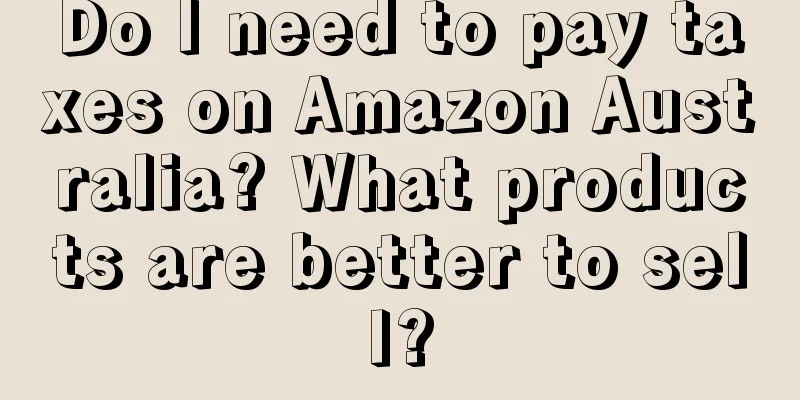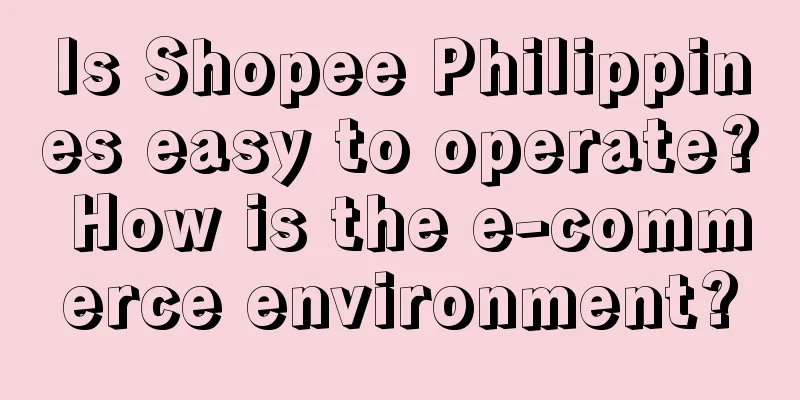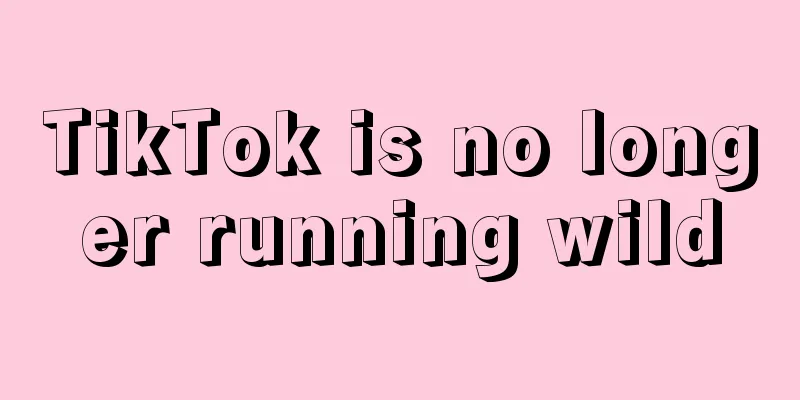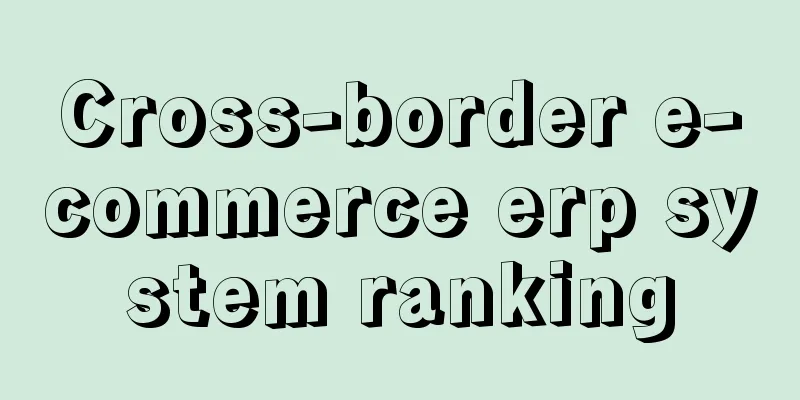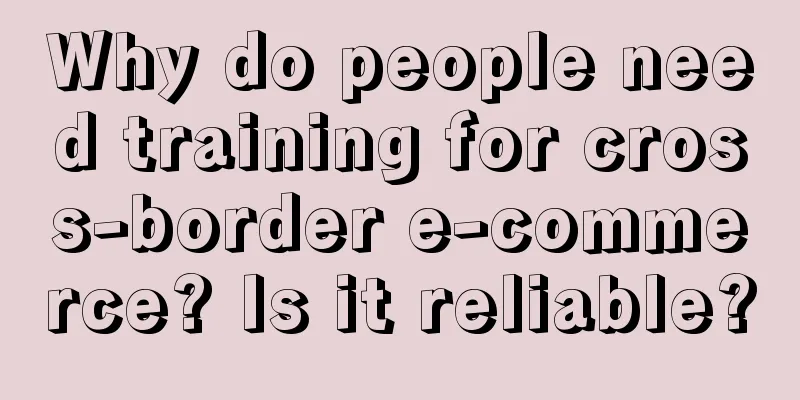Marketing has become people-oriented, so does the way we think about spending money have to change as well?

April is here and everything is coming back to life. Many brands have begun to dynamically adjust their budgets for the second half of the year based on the situation in the first quarter. It’s time for departments to fight for money again. Many CMOs ask me, when all departments and all channels have to spend money, where should I spend the money to maximize the effect? While chatting with them, it suddenly dawned on me that the four words "omni-channel marketing" have been talked about for such a long time, but isn't its essence just budget allocation? Generally speaking, in the traditional FMCG structure, the brand marketing budget is divided into two parts: one part is for brand campaigns, which evaluates exposure and interaction; the other part is for channel promotion, which focuses on getting results and evaluates sales. Once the product GTM fails, the two teams will start to pass the buck. However, this kind of architecture is originally an imported product of foreign companies, so it is normal that it is not suitable for local conditions. The original shelf logic focuses on "people, goods and places". Branding (brand advertising) deals with people, EC (performance advertising) coordinates goods and places, and the combination of the three will do the job. But now the new marketing has shifted from shelf logic to crowd strategy, and the key to brand competition has become: matching content with goods, scenes, and crowds to stimulate consumer demand and initiative in order to successfully complete sales conversion. This is completely different from the logic of previous brand advertising and performance advertising, and the measurement method is also different, so how should brands plan their budgets? How much budget should be allocated to this type of marketing? How to evaluate its effectiveness? I have also been studying this with brands and platforms. At the end of last year, Xiaohongshu and Kotler jointly released "The Third Paradigm of Marketing" Xiaohongshu Grass-Seeding Methodology (see the end of the article for how to get it). We have been talking about the term "grass-seeding" since 2021, but there has never been a very complete definition. In this white paper, Xiaohongshu defines grass-seeding marketing as follows: using word of mouth to convey product value, stimulate user demand, influence consumer decisions, and arouse users' active behaviors such as inquiries, collections, comments, and sharing. This short sentence has brought together the crowd, content, scenarios, and products. It also gave me an inspiration - the grass-planting budget may be the third type of budget that I am looking for that is more suitable for new marketing. 1. The essence of planting grass is to "plant people"The initial consumer market was based on the traditional offline shelf logic, where “mind” and “channel” were separate, and there were three key factors that influenced consumer decisions: knowing you, being able to buy, and being cheaper. As purchasing channels shifted from offline to online, the issue of “being able to buy” was almost resolved, and brands had to find ways to focus on “knowing you” and “being cheaper”. So you can see a lot of very sophisticated branding ads that focus on values, in order to reflect the brand's unique functions and emotional benefits. Although this kind of high-exposure advertising is very expensive, because people's attention is more concentrated and the coverage of the crowd is large, the CPM is still very low, which may have been the most cost-effective way at the time. The problem is that channels are becoming increasingly fragmented, and everyone’s attention is also scattered. A TVC is still as expensive as before, but it is impossible to reach as many people as before, and a big idea cannot satisfy everyone. The result is that the operation is as fierce as a tiger, but the ROI is zero to five. I talked with the CMO of Juduo before, and he told me that if I run an advertisement to women aged 20-35 today, maybe only one out of every 10 of them is my user, so why should I run this advertisement? The advertising of large-scale distributors is not enough. In order to sell the products, what should we do? We have to do EC (performance advertising) fiercely and then continue to fight price wars. Once the advertising starts, "the medicine cannot be stopped" because if the advertising stops, the traffic will stop, so the team will tilt resources to conversion and will not consider brand awareness. It is a vicious cycle. Everyone says it's difficult, but in fact they are using the wrong method. When the incremental consumption market turns to stock, the marketing strategy is no longer limited to the previous attack on the city and constantly using promotions to attract people. It is more necessary to focus on defending the city in the stock era, making those who love you love you more, and let them lead more people to love you. Now it is not brands that occupy users, but users who choose brands. When making choices, they pay more attention to their own needs. I choose you not because "you are good", but because "I need you", "it is suitable for me" and "it is related to me". Brands need to find ways to subtly instill this kind of mentality so that consumption will come naturally. After shifting from a category strategy of large penetration and large distribution to a people-oriented crowd strategy, there will be some differences in tactics. I call it the shift from positive funnel to reverse funnel: in the past, it was filtering after large penetration, but in the future it will be slow spread after precise customer acquisition. In the past, many brands were representatives of the category approach: they placed advertisements on CCTV, invited celebrities to endorse, and used catchy slogans to occupy the minds of consumers. At the same time, they spent a lot of money on distribution, relying on physical stores all over the country to allow people who wanted to buy to buy immediately. In contrast, babycare is a representative of the crowd approach: it targets a group of sophisticated parents born in the 1990s with scientific cognition and high consumption power, providing them with complete parenting solutions, and at the same time, through refined operations and brand content, to establish a clear brand image, so that those who love it will love it more and be willing to buy it from pregnancy to the age of 6. After switching from the positive funnel to the reverse funnel, the importance of "people" has become more prominent, and the entire marketing chain has also undergone a subversive change. In the past, we looked more at the 4P model when doing marketing, but now we can't just consider mind, channel, and price, but also see real people. The focus of marketing has shifted from 4P to 5A . When I reread Mr. Kotler's book "Marketing 4.0", I also found that the 5A model for measuring consumer paths has also been upgraded. The two main changes are that the original A2 "attitude" is split into passive "attraction" and active "inquiry", and the last link "repeat purchase" is changed to "advocacy", adding sharing and referral. The picture content comes from: Xiaohongshu's grass-growing methodology "The Third Paradigm of Marketing" There are two key points here: the first is to find ways to stimulate consumers' initiative, whether it is active search or active sharing; the second is not to let consumers stop at the purchase, but also to do a good job of post-link operations, that is, how to increase their LTV after the user purchases, and through their sharing, let more people be deeply attracted, and achieve a small closed loop between the A3 group and the A5 group. These two points are exactly what grass-roots marketing can achieve. Back to the consumer chain of grass-roots marketing: user word-of-mouth fermentation → triggering user demand → determining user consumption. It solves the bug in the original 5A model that ends at the A5 group, and links the A5 and A3 groups, making the 5A model truly closed. In the past two years, I have seen that each platform has launched its own crowd operation model based on its own user characteristics. The underlying logic is the same, which is to go back to the consumer link to see what they care about most and where to truly impress them. Planting grass is just a form, and the real people can still be seen behind them. 2. Crowd funnel: people expand and grass growsIn fact, the large-scale penetration, large-scale distribution and positive funnel were also necessary. First of all, it was actually cost-effective in that era. Secondly, the original level of digitization was not enough, and it was impossible to accurately stratify people. They could only circle people in first. But now the times have changed. Brands can use the reverse funnel approach. The key is to grasp two key points: First, in the customer acquisition phase, you don’t need to capture all the groups. What’s more important is to accurately capture the core groups that are more compatible with the brand’s products; Second, in the operation link, pay more attention to the back-end link, create resonance through refined operation of the crowd and content, improve LTV, and expand the crowd through fission. I have always admired the Xiaohongshu platform. When many channels were still promoting the positive funnel, it had already proposed a truly "people-oriented" reverse funnel model. The core logic is: on the premise that the brand first finds the potential SPU, it finds the most core group of people to plant grass based on the characteristics of the product, gradually breaks through the circle to the high-potential group, and then to the general group, spreading outward layer by layer. The picture content comes from: Xiaohongshu's grass-growing methodology "The Third Paradigm of Marketing" For example, two weeks ago, I talked with Tacy Tan, the general manager of Chando's marketing department, about one of their freeze-dried collagen masks. Based on the efficacy and characteristics of this product, the brand first targeted people with sensitive skin and anti-aging on Xiaohongshu, and then gradually radiated to people who want functional skin care, people who want big promotions, and finally to the general skin care market, achieving deep promotion of the product. This product also became the top-selling product in Chando stores on Xiaohongshu. The process of infiltrating the crowd layer by layer through the reverse funnel is actually the process of penetrating the original core population through grass planting, releasing brand potential through word of mouth, and continuously breaking the circle. Why do users open up layer by layer? It depends on two reasons: the people in the upper layer are willing to share actively, and the people in the lower layer believe in the reputation of the user and are willing to take the next step, such as searching or even buying. Behind this is the word-of-mouth community atmosphere on Xiaohongshu where ordinary people help ordinary people. The role of the community is to amplify the voices of users. I have a deep understanding of this. For example, one day I posted a note about taking care of my baby, and I just casually said that it was a bit difficult to control the amount when making milk. Immediately, someone told me in the comment area that if you use brand A, you should put three scoops, and brand B, you should put four scoops. Then someone replied to him and started recommending a milk powder brand. After seeing this, I searched for that brand. This is no longer "Xiaohongshu for indecision", because I didn't ask any questions at all. Xiaohongshu has now evolved to an astonishing level of semi-automation. This atmosphere is reflected in consumer decision-making, where users actively search for information before buying something and share their experience after buying it. In this sharing interaction, word of mouth ferments, and the influence grows like a snowball. Sometimes, just one popular article may bring huge benefits to the brand, just like a butterfly flapping its wings in the Amazon jungle in South America. Xiaohongshu introduced me to a marketing case of word-of-mouth marketing: In October last year, a UGC note of a coffee brand suddenly reached 1.4 million views, 17,000 likes and 4,000 collections, so they interviewed the author of this popular article and restored his mental journey: Perception: 10 days before posting the article, he saw brand advertisements and some UGC content on Xiaohongshu. At that time, he only had a slight impression of the brand. Planting grass: On the day of posting the article, he saw a note saying that the brand is currently having a limited peripheral event, and he was attracted to plant grass. In-depth seeding: He actively searched for the brand words, product words and brand-related information of this coffee brand. Purchase: He went directly to the coffee shop downstairs from the company to buy the products and got the peripherals. Share: After work, he posted this "explosive article" on Xiaohongshu. From this path, we can see that real UGC content quickly and directly promotes consumer decisions through word-of-mouth effects, and creates more and more popular UGC, driving the next round of population penetration. This person-to-person model of grass-roots marketing has greatly improved the efficiency of marketing. 3. What is the most cost-effective way to grow grass?Brands have limited budgets, so they definitely want to find the people who are easiest to convert right away. Now that we know the funnel needs to be reversed, the question becomes, how can we really identify and run this reverse funnel? I started studying omnichannel management last year. From a methodological perspective: Global management = crowd (emotion) x content (interest) x scene (use) x product (product) To sum it up in one sentence, the conversion can only be successfully completed when the product, people, content and scenarios are matched and linked. Among these, finding the right group of people is the most important thing. After finding the right people, you can use the content that these people like to watch to improve the efficiency of seeding; one step further, you can also use the needs of these users to define your product in turn. As far as I know, finding counter-funnel for brands is already a traditional skill of Xiaohongshu. At the end of last year, I received a case collection of "24 Beauty Case" from Xiaohongshu. There were 30 brands in it, and each of them had potential SPU, customized counter-funnel model and BFKS delivery ratio found by Xiaohongshu for them. How did it do this? Xiaohongshu told me that they have an internal marketing methodology for seeding ads, which consists of four steps: opportunity insight, goal setting, content delivery, and effect measurement. The picture content comes from: Xiaohongshu's grass-growing methodology "The Third Paradigm of Marketing" I studied this methodology carefully, especially the part about building a reverse funnel. First, find the core group. Xiaohongshu has two methods: The first type, to put it simply, is "finding the new from the old", which may be the A3 group of people who have read brand content and searched for keywords on Xiaohongshu before. For example, my product is an eye-protection desk lamp of brand A. Xiaohongshu will find me some users who have searched for "brand A" and "eye-protection desk lamp" before. They may be people with students at home, or people who work from home, or people who always work overtime at night. This is the first layer of core population and the group with the highest conversion rate. The brand can give people peace of mind as soon as it comes up. Secondly, brands can also define their core groups based on the characteristics of the products themselves. For example, when Casarte cooperated with Xiaohongshu, it broke through the most common home-buying and decoration groups and jumped out of the vicious circle of "the more marketing, the more homogeneous". Through the analysis of the data on the site, it was found that in the scene of "bathing", there were more than 670,000 notes related to "mild water quality" and "body care" on Xiaohongshu. Therefore, Xiaohongshu found more people who care about "water" for Casarte - mothers and babies, skin care people, and people with exquisite life. These users have high requirements for water quality. Mothers are concerned about their children's skin health, girls who love beauty care about skin care, and sophisticated lifestylers hope that bathing is as comfortable as taking a hot spring bath. Xiaohongshu has expanded the market boundaries for Casarte by tapping into new groups of people. When extrapolating further, the higher the correlation between groups of people, the more similar they look, and the more likely the model is to work. Therefore, there are two ways to find the next layer of high-potential people. On the one hand, we can expand outward from the product perspective and find people who have demand for such products. The other is to start from the characteristics of the group and gradually spread out. For example, Casarte's water heaters can be expanded from skin care people to SPA people, hot spring enthusiasts, and so on. In the process of pushing forward layer by layer, it can continuously help brands find new scenarios, new groups of people and new product opportunities, and the certainty will be relatively high. After building this reverse funnel, brands can use KFS delivery (KOL/LOS/KOC content, information flow bidding ads, search bidding ads) to use commercial traffic to amplify high-quality content, accurately cover all areas of user decision-making, and obtain the certainty of seeding grass. If you look at Xiaohongshu's scientific methodology for promoting products, you will find that it is actually based on the logic of "global operation = crowd x content x scenario x product" : scientific insight (product + crowd) and content delivery (content & scenario). On this basis, in order to allow brands to obtain quantifiable results, Xiaohongshu can also help brands complete the link of goals and effects through the three dimensions of population penetration, content penetration, and business conversion. This is indeed quite scientific. Of course, in my discussions with many CMOs, they also raised a lot of concerns about seeding, such as: "I see that most of those who recommend products are beauty and maternal and child products. I run an offline business. Am I suitable for recommending products?" "My product has just been launched. I have no idea whether the market will buy it. I dare not invest." So, I went to ask around a few brands in different categories and stages, and found that there were some successful cases that I hadn’t thought of. For example, we may have thought that e-commerce business is more suitable for promoting pets, but I heard from Zhiheng of Xiaohongshu that there is an app called "Star Scout Pet Search" that specializes in helping people find pets. More than 50% of its business comes from Xiaohongshu. There is also a series of "Meet the Museum" exhibitions. Data from the brand side shows that 60% of the users who make transactions come from Xiaohongshu. I recently talked to Chando, they have a lot of SKUs, including mature big single products that have been in the market for many years, and potential new products. Products at different stages, such as the Little Purple Bottle, Polar Holy Water, and Freeze-dried Collagen Mask, have all appeared on Xiaohongshu based on different grass-planting focuses . The application scope of seeding is much wider than I thought, and now there is a complete scientific methodology. In the future marketing landscape, seeding marketing will definitely have a bigger place. IV. ConclusionThe reason why marketing is difficult nowadays is that changes are happening. We are starting from scratch and there is no standard answer. We have to grope our way through everything. I chatted with Diao Ye, the founder of Afu Essential Oil, a few days ago. He also said, "Today's China has entered a no-man's land. The questions we are doing today are not yet done by Europe and the United States." The future marketing value chain, including business models, marketing structures, marketing ecosystems, marketing methods, corporate organizations, and platform influencers, will all be broken up and reorganized, and the measurement system will also change. But I think that the underlying tone of "people-oriented" will not change in the short term, so the budget related to the essence of "planting people" may become more and more important in the future marketing budget, and it is necessary for brands to consider it as a separate budget. I also know that path dependence is an instinct, and copying past successful experiences to the present is an inertia, so when the grass-roots budget appears as the third budget option for brands, it may take a little courage to accept it. But it's always the brave ones who enjoy the world first, isn't it? Author: Daojie Doris WeChat public account: Daojie doris |
<<: Top-tier "Snow King" fans-attracting gameplay
>>: In-depth review of Xiaomi’s automotive communication strategy
Recommend
What are the fees for individual cross-border e-commerce? How can individuals do cross-border e-commerce?
With the rapid development of cross-border e-comme...
Understanding Global Consumer Operations from Four Data from Kidswant’s Annual Report
Private domain operation is the point, membership ...
This is the best template I have ever seen.
In the process of user operation, user churn is an...
Data analysts PK operations, no more being chased for numbers!
For data analysts, the endless demand for data is ...
How to set product attributes on Shopee? What are invalid attributes?
Shopee product attributes highlight the characteri...
Tencent's conscientious app will be shut down, netizens regret: it was so useful...
Tencent has a rich product matrix, ranging from so...
Are Amazon e-commerce operation companies reliable? How to judge whether they are reliable?
Everyone should know about Amazon. Many merchants ...
Middle-aged people seeking wealth fill 798 Night Market
The crowded night market has become a paradise for...
Can I run ads on Facebook Mall accounts? How do I pay?
Facebook Mall is a kind of social cross-border e-c...
How to choose Amazon operation tools? Operation tool recommendations
Success on Amazon requires long-term efforts. Even...
Can Wish still be done in 2021? Why?
The cross-border e-commerce industry is developing...
Newcomer Temu is eyeing the industrial belt, and the old Amazon can't sit still either
Competition in the cross-border e-commerce industr...
Building a business analysis system, this is the best I have ever seen
In modern enterprise management, business analysis...
These 8 foot products have sales of 100,000+, and there are many opportunities to make money
Different groups of people and different parts of ...
There are three levels of business analysis. Which level are you at?
In business management, business analysis is a key...
